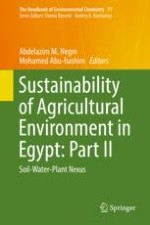2019 | OriginalPaper | Buchkapitel
Algae and Chain Aquaculture: An Approach Towards Sustainable Agriculture
verfasst von : Nermin Adel El Semary
Erschienen in: Sustainability of Agricultural Environment in Egypt: Part II
Aktivieren Sie unsere intelligente Suche, um passende Fachinhalte oder Patente zu finden.
Wählen Sie Textabschnitte aus um mit Künstlicher Intelligenz passenden Patente zu finden. powered by
Markieren Sie Textabschnitte, um KI-gestützt weitere passende Inhalte zu finden. powered by
